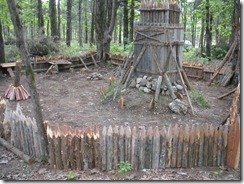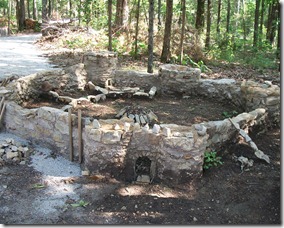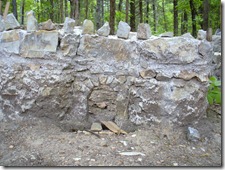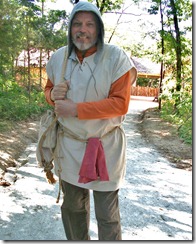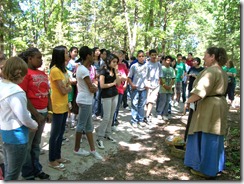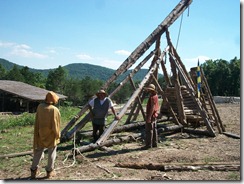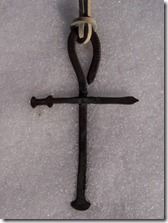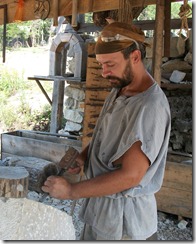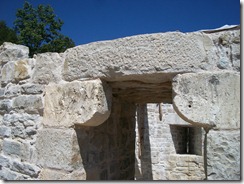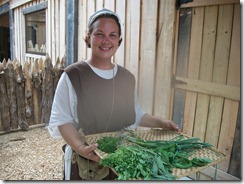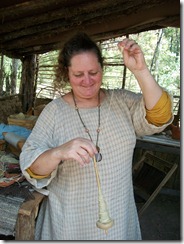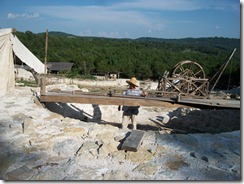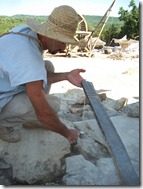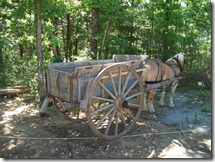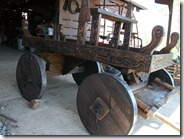A common question of guests at the Ozark Medieval Fortress is whether cannons are the reason the construction of castles came to an end. This is almost what I would call an “urban legend” about the Middle Ages. Not everyone agrees, but my answer is that it is not that simple. Black powder was originally invented by the 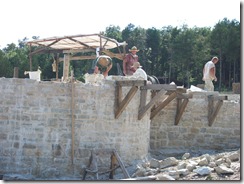 Chinese, but the Europeans didn’t know about it. Gun powder for Europe was developed by a German monk named Berthold Schwarz in about 1315 and was quickly used for war, not fireworks. However, the cannons used carved stones for cannon balls and were not particularly accurate or destructive. Cannons are only part of the reason that fewer and fewer castles were built after the Medieval through the Renaissance. If cannons are the sole reason for the end of castle building, why was Fort Sumter built in Charleston Harbor, USA (an all-brick fort)? Even in World War II several German castles held up Patton’s army.
Chinese, but the Europeans didn’t know about it. Gun powder for Europe was developed by a German monk named Berthold Schwarz in about 1315 and was quickly used for war, not fireworks. However, the cannons used carved stones for cannon balls and were not particularly accurate or destructive. Cannons are only part of the reason that fewer and fewer castles were built after the Medieval through the Renaissance. If cannons are the sole reason for the end of castle building, why was Fort Sumter built in Charleston Harbor, USA (an all-brick fort)? Even in World War II several German castles held up Patton’s army.
The reasons for the dramatic decrease in castle building at the end of the Middle 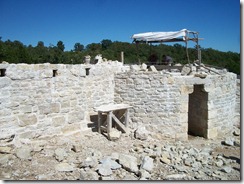 Ages are the three C’s: commerce, crowns and cannons. The introduction of cannons changed the design from tall, 5-foot thick walls to lower, 20-foot thick walls with sharp angles to help deflect the cannon balls. But some castles were still built during the Renaissance. Some castles were destroyed by kings (the crown) who did not want them inside their growing domain as potential rebellious strongholds. This was the time of the consolidation of many provinces into countries, especially in France and England.
Ages are the three C’s: commerce, crowns and cannons. The introduction of cannons changed the design from tall, 5-foot thick walls to lower, 20-foot thick walls with sharp angles to help deflect the cannon balls. But some castles were still built during the Renaissance. Some castles were destroyed by kings (the crown) who did not want them inside their growing domain as potential rebellious strongholds. This was the time of the consolidation of many provinces into countries, especially in France and England.
The main reason that the rate of castle building plummeted was the prosperity that increased commerce introduced, which goes hand in hand with political stability. It 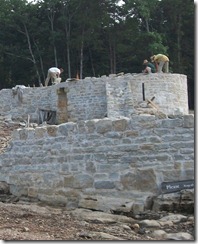 is revealing to look at what replaced the castles. The people of Europe continued to be industrious: they built amazing cathedrals throughout this time. However, they quit building so many castles and began building… palaces. A castle is fortified, a palace is not. It is not hard to picture the wives of the lords asking why the need to live in a cold, damp castle tower as they became more and more confident of peace. Instead, they wanted and got beautiful homes with high windows (like the cathedrals) with light and air and comforts. In addition, after the middle of the 1300’s, they realized a castle was no protection from something worse than an attack from enemies: the plague. The perception was that a palace with its open, airy rooms and separation from the masses afforded better security than stone walls.
is revealing to look at what replaced the castles. The people of Europe continued to be industrious: they built amazing cathedrals throughout this time. However, they quit building so many castles and began building… palaces. A castle is fortified, a palace is not. It is not hard to picture the wives of the lords asking why the need to live in a cold, damp castle tower as they became more and more confident of peace. Instead, they wanted and got beautiful homes with high windows (like the cathedrals) with light and air and comforts. In addition, after the middle of the 1300’s, they realized a castle was no protection from something worse than an attack from enemies: the plague. The perception was that a palace with its open, airy rooms and separation from the masses afforded better security than stone walls.
Of course, the situation varied by region. Castles remained important on the “frontier” of the realms. Some remarkable castles were built in the Renaissance in England, France and Germany and some, such as the one at Heidelberg, Germany went from being a Medieval fortress to a Renaissance palace. So, the bottom line is that although cannons were a part of the demise of castle building, other factors were important. To keep it simple, remember cannons, crowns and commerce.
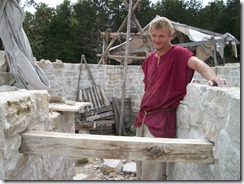 the builders a change order! The edges of the door opening, both outside and inside, require carved stones that receive a wooden frame to hold the door. The stones above have to be carefully placed to support incredible weight above. The masons do this by first having a lintel stone and above that an arch with meticulously shaped and placed stones In order to lock the door, the masons preplan and place squared and hollow holes in the wall that hold a wooden oak beam that later can be slid out of the wall behind the door. The door itself was hung on iron hinges made by the blacksmith.
the builders a change order! The edges of the door opening, both outside and inside, require carved stones that receive a wooden frame to hold the door. The stones above have to be carefully placed to support incredible weight above. The masons do this by first having a lintel stone and above that an arch with meticulously shaped and placed stones In order to lock the door, the masons preplan and place squared and hollow holes in the wall that hold a wooden oak beam that later can be slid out of the wall behind the door. The door itself was hung on iron hinges made by the blacksmith. 